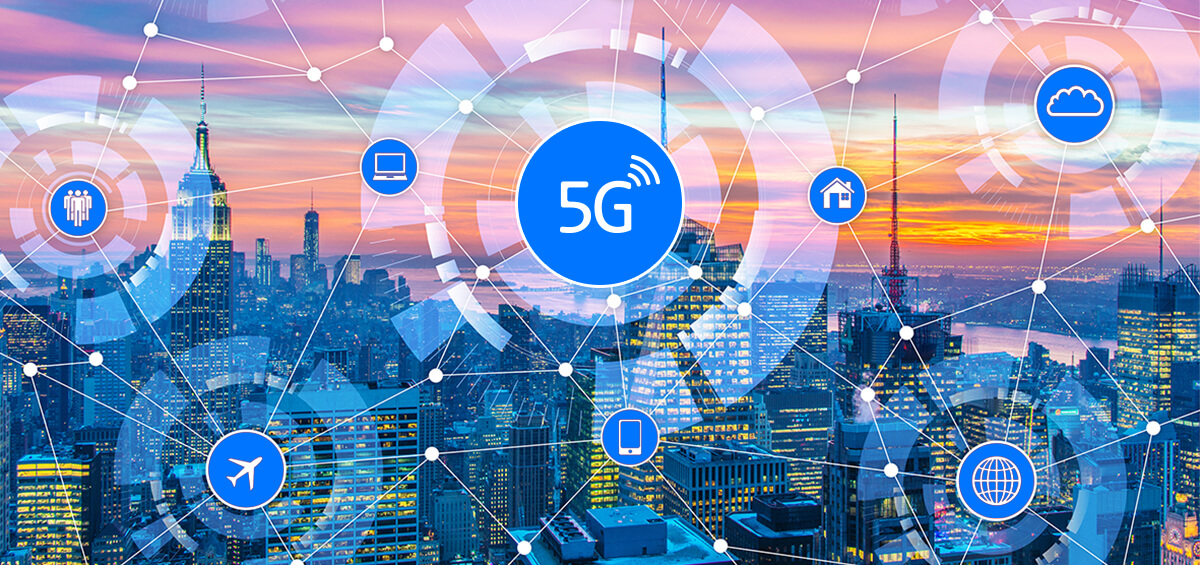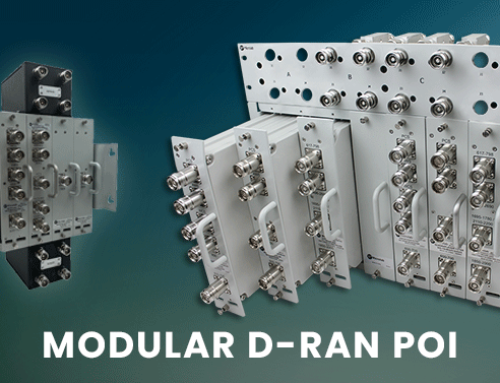By now you have probably heard about the 5G phenomenon and world changing hype. Wireless carriers are racing to capture customers and market share by providing 5G services and products. 5G refers to 5th generation wireless network technology. Although several carriers purport to have launched 5G in limited cities in 2018, rollout of services and devices are anticipated to begin in 2019 and continue for several years. This article will touch on how RF Industries is participating in creating 5G.
Generations of Wireless Networks
Starting with the first generation (1G) in 1983, each successive generation of wireless networks has enabled mobility and proliferation of devices, applications and services. 2G was the first digital wireless network enabling basic data services and SMS messaging with 64 Kbps speeds. 3G offered faster data rates with basic mobile internet, games, music streaming and video calling. 4G began around 2010 featuring video, internet access and data speeds of 100 Mbps 4G launched around 2010 with video and internet access.
The Technology to Enable 5G
5G promises 100 times faster data speed. In addition to faster data speeds, 5G is about faster response or lag time. Technically referred to as latency, the lag time is the delay a command signal takes to travel through network to initiate a response or action. 5G is expected to improve the latency by a factor of 10 compared to 4G. A third element of 5G is support of 100 times more mobile and fixed devices per square kilometer.
The 5G Journey
The initial impact of 5G will be faster mobile video download speeds. As the network, devices and applications deploy and evolve, self-driving cars, remote robotic surgery and Virtual Reality (VR), Augmented Reality (AR) experiences are just some of the transformation experiences that 5G will enable. 5G will enable IoT (Internet of Things) through the wireless connection of millions of fixed and mobile devices. 5G will give birth to businesses, markets and services that are not defined at the initial roll-out.
5G Infrastructure Requirements
Despite what some believe, 5G does not begin with the first mobile or portable device connection to the network. The network infrastructure must be in place to support the mobile and fixed devices. To recognize the benefits of 5G, a massive overall of the network infrastructure is needed. The process to change the infrastructure for 5G began with changes to the 4G networks and will continue for several years. Network densification is one of the many changes.
5G Network Densification
For higher capacities, faster speeds, lower latency and more system capacity to be realized, additional cell sites need to be installed. The additional cell sites will be in the form of enhanced Macro Cells, Small Cells and in-building Distributed Antenna Systems (DAS) networks.
Small Cell
Unlike the larger tall tower large antenna array macro cell site, small cell is typically the size of a backpack and deployed on street lights, utility poles or sides of buildings. A small transmit/receive antenna is located on the top of the structure connected by a short coax cable run.
5G will require the installation of hundreds of thousands of small cells. In 2017 about 13,000 were installed. In 2018 about 60,000 were installed. Future infrastructure deployments are estimated to be 80% small cell installations.
In-Building
Over 65% of mobile wireless connections occur in a building, stadium or structure. With buildings naturally acting as a barrier to RF signals, an in-building DAS network is necessary for ubiquitous 5G coverage.
Wires for Wireless
Enabling wireless networks to function requires a lot of wires and other passive components. Macro cell, small cell, and in-building DAS networks require connections via coax, copper and fiber optic “wires”. Other passive components include Ethernet cables, hybrid cables, splitters, couplers, tappers, attenuators, loads, adapters. RF Industries provides these products in standard and custom configurations. RF Industries, providing the “wires” for “wireless” networks.




